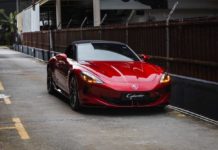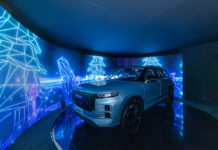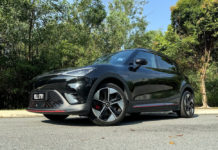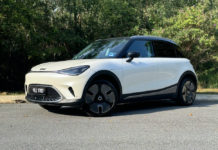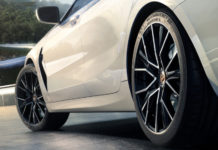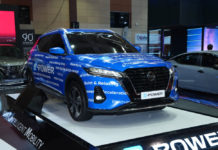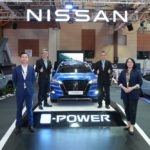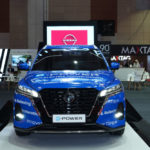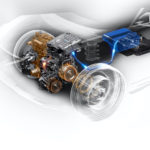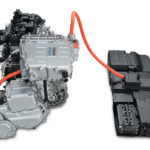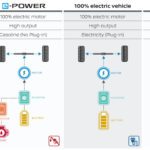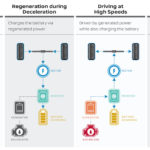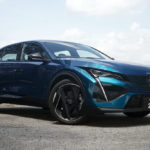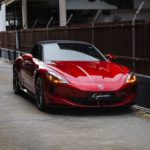The Nissan e-Power drive system presents another proposal to solve the EV range anxiety. The new EV drive system was showcased at the Malaysian Autoshow 2024 by Nissan’s official distributor in Malaysia – Edaran Tan Chong Motor. A Nissan Kicks compact SUV was the vehicle of choice to carry the message.
Instead of plugging into a charging station to recharge its battery, the Nissan e-Power uses a small-capacity petrol engine and a Lithium-ion battery to power an electric motor. Subsequently, the electric motor is used exclusively to drive the wheels.

WHY IS THE E-POWER AN EV AND NOT A HYBRID
While this might sound as if the e-Power is a hybrid vehicle, it really isn’t. The petrol engine’s horsepower and torque do not directly translate to the vehicle’s motion. Furthermore, it is the electric motor that takes centre stage and not as an assistant to the petrol engine.
The e-Power’s intelligent control system operates the engine independently, taking into consideration the vehicle speed, road condition, degree of acceleration and battery charge levels. In turn, engine operation becomes less frequent, devoid of any change-over from the engine to the motor, which affords a smoother ride.

Keep in mind that the Nissan e-Power vehicle will still emit CO2, although at much lower levels. And, regular servicing is also required to change motor oil, coolant and all the other bits related to a petrol engine – at a much lower cost.
Therefore, you can think of it as the engine’s sole purpose is to generate electricity, which is stored in the battery that the electric motor uses to move the vehicle. Yes, there are many benefits to the system.
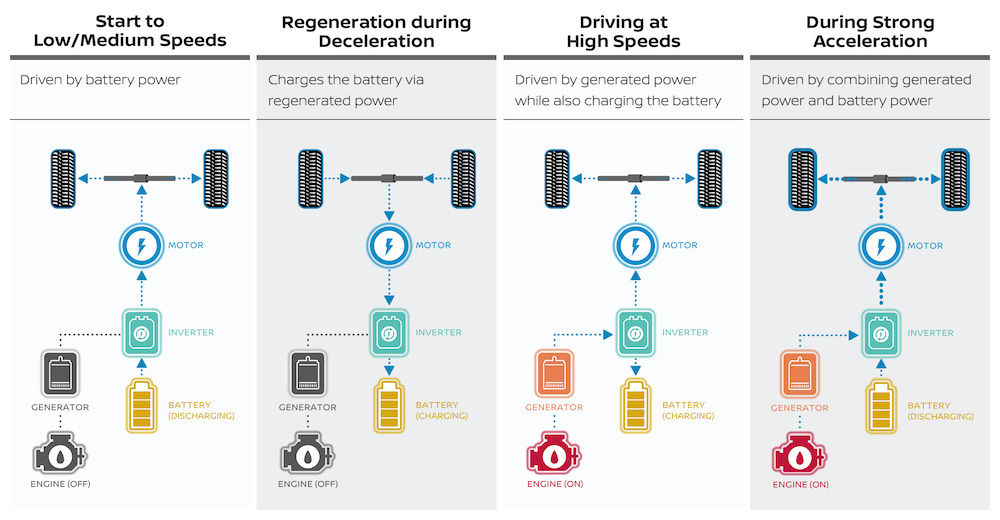
NISSAN E-POWER – AN EV WITHOUT THE EV HANDCUFFS
Right away, the Nissan e-Power system lets you skip the queue to the charging station. In fact, you don’t need any sort of wall plug either because the e-Power vehicle is carrying its own generator.
In addition, the e-Power features the convenience of single-pedal driving first seen on the Nissan Leaf. With this feature, you only need to take your foot off the accelerator for the regenerative braking to kick in, reducing the speed as one would when stepping on the brake pedal. This operation also tops up the battery.
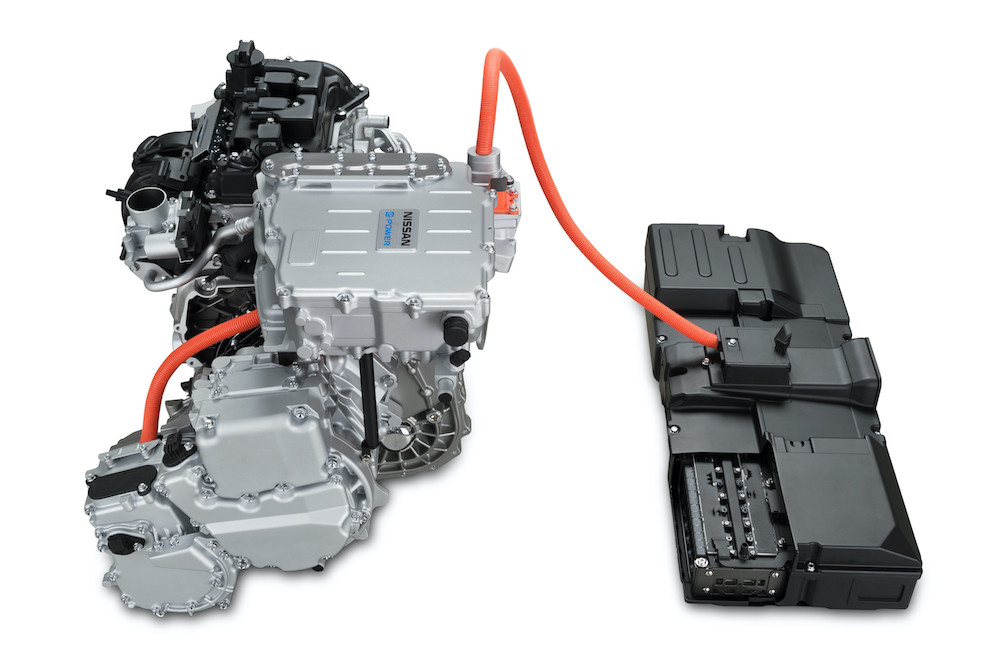
Nissan claims that the e-Power vehicle records a fuel efficiency of 21.7km per litre – or about 4.6l per 100km. This means that e-Power vehicle returns a range of approximately 900km from a 41-litre petrol tank and regenerative braking, effectively curing range anxiety.
The e-Power vehicle operates just as a conventional EV would. Since the wheels are directly connected to the motor, you can expect the instant acceleration enjoyed by conventional electric vehicles. At high speeds, the engine runs at optimal RPM to generate electricity so that the battery doesn’t run out. In situations where strong acceleration is required, the electric motor takes energy from the battery as well as directly saps the petrol engine for more power.
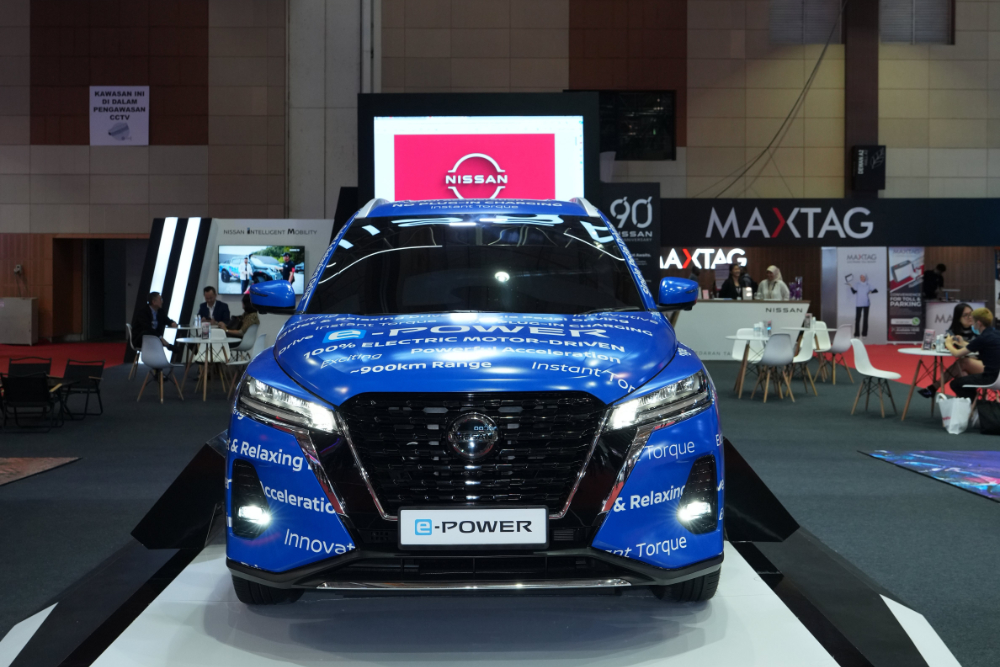
ALL GOOD BUT IS THIS BOUND FOR MALAYSIA?
The Nissan e-Power is an interesting take on the electric vehicle. In fact, the electrified powertrain has won the company ‘Technology of the Year’ from the Automotive Researches & Journalists’ Conference of Japan (RJC) in 2021. The e-Power drivetrain has been applied on the Nissan Note and the Nissan Kicks, the vehicle you see in these pictures.
It is also interesting to note that Nissan Kicks e-Power is available in Thailand, which means that the compact SUV should make its way to our roads shortly. Will this change the EV landscape in Malaysia and increase EV adoption among us who have limited resources for a wall box? And what will happen to the Nissan Leaf?
With the rationalisation of fuel subsidies just over the horizon, the common folk would appreciate the range the Nissan e-Power affords.



